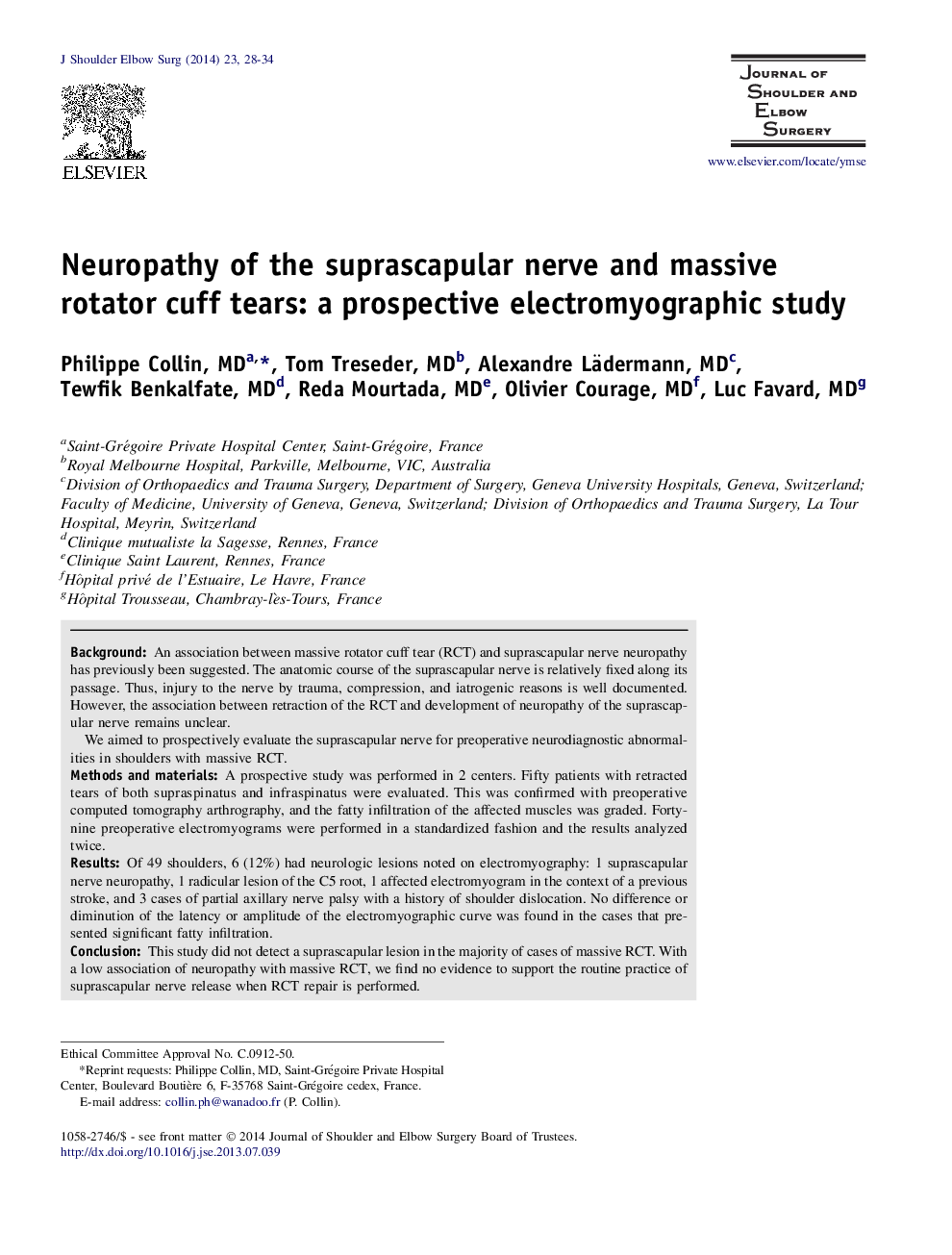| Article ID | Journal | Published Year | Pages | File Type |
|---|---|---|---|---|
| 4074627 | Journal of Shoulder and Elbow Surgery | 2014 | 7 Pages |
BackgroundAn association between massive rotator cuff tear (RCT) and suprascapular nerve neuropathy has previously been suggested. The anatomic course of the suprascapular nerve is relatively fixed along its passage. Thus, injury to the nerve by trauma, compression, and iatrogenic reasons is well documented. However, the association between retraction of the RCT and development of neuropathy of the suprascapular nerve remains unclear.We aimed to prospectively evaluate the suprascapular nerve for preoperative neurodiagnostic abnormalities in shoulders with massive RCT.Methods and materialsA prospective study was performed in 2 centers. Fifty patients with retracted tears of both supraspinatus and infraspinatus were evaluated. This was confirmed with preoperative computed tomography arthrography, and the fatty infiltration of the affected muscles was graded. Forty-nine preoperative electromyograms were performed in a standardized fashion and the results analyzed twice.ResultsOf 49 shoulders, 6 (12%) had neurologic lesions noted on electromyography: 1 suprascapular nerve neuropathy, 1 radicular lesion of the C5 root, 1 affected electromyogram in the context of a previous stroke, and 3 cases of partial axillary nerve palsy with a history of shoulder dislocation. No difference or diminution of the latency or amplitude of the electromyographic curve was found in the cases that presented significant fatty infiltration.ConclusionThis study did not detect a suprascapular lesion in the majority of cases of massive RCT. With a low association of neuropathy with massive RCT, we find no evidence to support the routine practice of suprascapular nerve release when RCT repair is performed.
